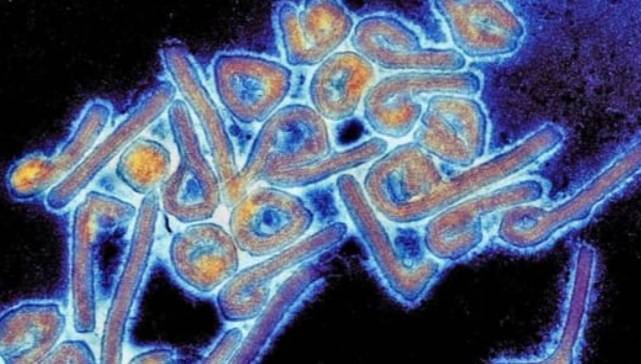Although it is not a new virus, we are hearing a lot about it these days—it's the Marburg virus (MVD), which has a fatality rate of up to 90%. Known previously as Marburg hemorrhagic fever, the Marburg virus is a highly contagious viral hemorrhagic fever that belongs to the same family as the Ebola virus. While both diseases are caused by different viruses, they exhibit clinical similarities. Both are rare and capable of causing outbreaks with high mortality rates.
The Marburg virus was first identified in 1967 following an outbreak among workers exposed to African green monkeys in Marburg, Germany. According to a report by the British newspaper "Daily Mail," human Marburg virus infection occurs through prolonged exposure to mines or caves inhabited by colonies of fruit bats, and individuals remain infectious as long as their blood contains the virus.
The report states that everyone is racing against time to develop a vaccine against the Marburg virus. There are concerns about an illness that masquerades as a cold for several days before suddenly leading to organ failure and bleeding from multiple sites in the body, with outbreaks currently occurring in Africa.
The Marburg virus first appeared in Equatorial Guinea and Cameroon, and its symptoms are mild initially but can rapidly escalate. The newspaper explained that the Marburg virus is considered a more deadly version of Ebola, spreading through Central Africa and causing panic as it can initially disguise itself as a cold before erupting into horrifying symptoms, including organ failure and bleeding from multiple orifices.
The outbreak of this highly lethal virus—which kills up to 9 out of 10 patients—was declared in Equatorial Guinea after 9 deaths and 16 suspected cases. The neighboring Cameroon has reported two suspected cases in teenagers with no travel ties to Equatorial Guinea, indicating it might be more widespread than official case statistics suggest.
According to the newspaper, the Marburg virus, because of its hemorrhagic fever similar to Ebola, has an incubation period in the body lasting several days, if not weeks. Consequently, some scientists have likened patients to ghosts due to severe bleeding. It causes devastating infections throughout the body and blood clotting, leading to organ failure.
The Marburg virus spreads among people when someone comes into contact with the skin of an infected person or their eye fluids or mucous membranes from the nose or mouth. It also spreads through blood and body fluids, including urine, saliva, sweat, stool, vomit, breast milk, amniotic fluid, and semen from a sick person or someone who died from Marburg virus disease. It can also spread through sexual contact or by touching contaminated items with a patient’s body fluids. It can take anywhere from 2 to 3 weeks from exposure until symptoms of the virus appear before rapid and severe health deterioration occurs, known as the incubation period, which is the time the virus enters the body and begins to replicate without causing symptoms yet.
### Invasion, Evasion, and Control
The newspaper explained that upon entering the body, the Marburg virus targets immune cells—cells responsible for protecting the body from invaders (microbes). As a result, it disrupts the body's proper activation of white blood cells in response to the virus, allowing it to spread further in the body and evade most natural protective measures.
When symptoms begin to manifest, they may resemble flu-like symptoms, with fever, headache, chills, and body aches all being early signs. Infected individuals often develop a non-itchy rash that appears across the person's face, arms, legs, hands, and feet. Other less common signs of the disease during the initial few days include jaundice, severe nausea, abdominal pain, pink eye, throat irritation, sores appearing inside the mouth, and profuse watery diarrhea. These symptoms occur as immune responses to the virus and also due to the virus invading and destroying cells from within.
Typically, on around the fifth day, the disease progresses to what doctors describe as the "early organ phase." During this phase, the patient may begin to suffer from bleeding from their eyes, inflammation throughout the body, and visible swelling, usually around the legs, ankles, and feet. Patients in this stage are described as appearing ghost-like, with deep-set eyes, expressionless faces, and extreme lethargy.
Internal bleeding can cause skin discoloration, vomiting blood, dark and colored stool, pooling of blood in the lungs and stomach, and bleeding gums. Fever remains high during this period, with some individuals reporting neurological symptoms such as brain swelling, delirium, confusion, irritability, and aggression. Patients often die within 8 to 9 days from the onset of initial symptoms, according to the World Health Organization, with a mortality rate of 90% among patients. Organ failure occurs when the virus destroys the cells that allow it to function. If the individual survives, they may enter the late organ phase, suffering from dementia, possibly entering a coma, and experiencing permanent brain and organ damage.




